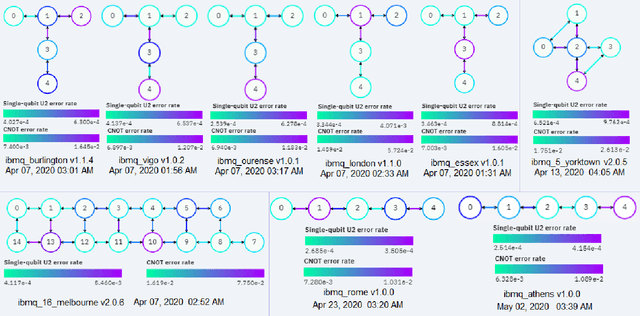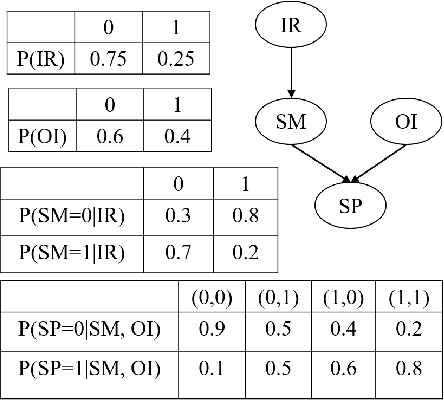Saideep Nannapaneni
Practitioner-Centric Approach for Early Incident Detection Using Crowdsourced Data for Emergency Services
Dec 03, 2021



Abstract:Emergency response is highly dependent on the time of incident reporting. Unfortunately, the traditional approach to receiving incident reports (e.g., calling 911 in the USA) has time delays. Crowdsourcing platforms such as Waze provide an opportunity for early identification of incidents. However, detecting incidents from crowdsourced data streams is difficult due to the challenges of noise and uncertainty associated with such data. Further, simply optimizing over detection accuracy can compromise spatial-temporal localization of the inference, thereby making such approaches infeasible for real-world deployment. This paper presents a novel problem formulation and solution approach for practitioner-centered incident detection using crowdsourced data by using emergency response management as a case-study. The proposed approach CROME (Crowdsourced Multi-objective Event Detection) quantifies the relationship between the performance metrics of incident classification (e.g., F1 score) and the requirements of model practitioners (e.g., 1 km. radius for incident detection). First, we show how crowdsourced reports, ground-truth historical data, and other relevant determinants such as traffic and weather can be used together in a Convolutional Neural Network (CNN) architecture for early detection of emergency incidents. Then, we use a Pareto optimization-based approach to optimize the output of the CNN in tandem with practitioner-centric parameters to balance detection accuracy and spatial-temporal localization. Finally, we demonstrate the applicability of this approach using crowdsourced data from Waze and traffic accident reports from Nashville, TN, USA. Our experiments demonstrate that the proposed approach outperforms existing approaches in incident detection while simultaneously optimizing the needs for real-world deployment and usability.
Emergency Incident Detection from Crowdsourced Waze Data using Bayesian Information Fusion
Nov 10, 2020



Abstract:The number of emergencies have increased over the years with the growth in urbanization. This pattern has overwhelmed the emergency services with limited resources and demands the optimization of response processes. It is partly due to traditional `reactive' approach of emergency services to collect data about incidents, where a source initiates a call to the emergency number (e.g., 911 in U.S.), delaying and limiting the potentially optimal response. Crowdsourcing platforms such as Waze provides an opportunity to develop a rapid, `proactive' approach to collect data about incidents through crowd-generated observational reports. However, the reliability of reporting sources and spatio-temporal uncertainty of the reported incidents challenge the design of such a proactive approach. Thus, this paper presents a novel method for emergency incident detection using noisy crowdsourced Waze data. We propose a principled computational framework based on Bayesian theory to model the uncertainty in the reliability of crowd-generated reports and their integration across space and time to detect incidents. Extensive experiments using data collected from Waze and the official reported incidents in Nashville, Tenessee in the U.S. show our method can outperform strong baselines for both F1-score and AUC. The application of this work provides an extensible framework to incorporate different noisy data sources for proactive incident detection to improve and optimize emergency response operations in our communities.
Experimental evaluation of quantum Bayesian networks on IBM QX hardware
May 26, 2020



Abstract:Bayesian Networks (BN) are probabilistic graphical models that are widely used for uncertainty modeling, stochastic prediction and probabilistic inference. A Quantum Bayesian Network (QBN) is a quantum version of the Bayesian network that utilizes the principles of quantum mechanical systems to improve the computational performance of various analyses. In this paper, we experimentally evaluate the performance of QBN on various IBM QX hardware against Qiskit simulator and classical analysis. We consider a 4-node BN for stock prediction for our experimental evaluation. We construct a quantum circuit to represent the 4-node BN using Qiskit, and run the circuit on nine IBM quantum devices: Yorktown, Vigo, Ourense, Essex, Burlington, London, Rome, Athens and Melbourne. We will also compare the performance of each device across the four levels of optimization performed by the IBM Transpiler when mapping a given quantum circuit to a given device. We use the root mean square percentage error as the metric for performance comparison of various hardware.
Augmenting Learning Components for Safety in Resource Constrained Autonomous Robots
Apr 04, 2019



Abstract:Learning enabled components (LECs) trained using data-driven algorithms are increasingly being used in autonomous robots commonly found in factories, hospitals, and educational laboratories. However, these LECs do not provide any safety guarantees, and testing them is challenging. In this paper, we introduce a framework that performs weighted simplex strategy based supervised safety control, resource management and confidence estimation of autonomous robots. Specifically, we describe two weighted simplex strategies: (a) simple weighted simplex strategy (SW-Simplex) that computes a weighted controller output by comparing the decisions between a safety supervisor and an LEC, and (b) a context-sensitive weighted simplex strategy (CSW-Simplex) that computes a context-aware weighted controller output. We use reinforcement learning to learn the contextual weights. We also introduce a system monitor that uses the current state information and a Bayesian network model learned from past data to estimate the probability of the robotic system staying in the safe working region. To aid resource constrained robots in performing complex computations of these weighted simplex strategies, we describe a resource manager that offloads tasks to an available fog nodes. The paper also describes a hardware testbed called DeepNNCar, which is a low cost resource-constrained RC car, built to perform autonomous driving. Using the hardware, we show that both SW-Simplex and CSW-Simplex have 40\% and 60\% fewer safety violations, while demonstrating higher optimized speed during indoor driving \textbf{($\sim\,0.40\,m/s$)} than the original system (using only LECs).
 Add to Chrome
Add to Chrome Add to Firefox
Add to Firefox Add to Edge
Add to Edge